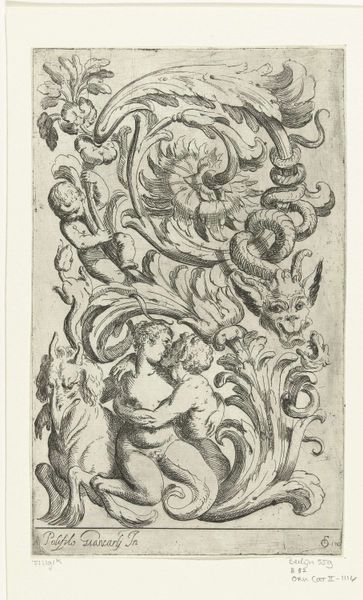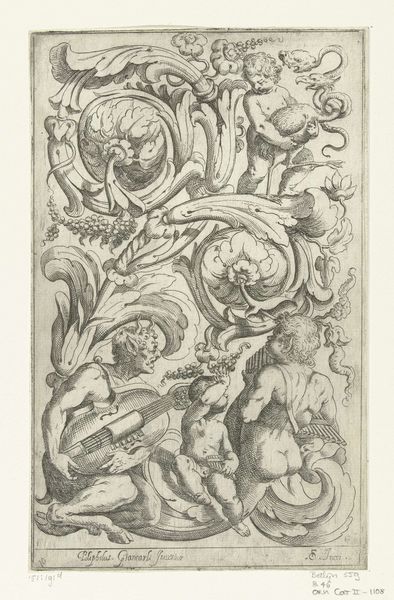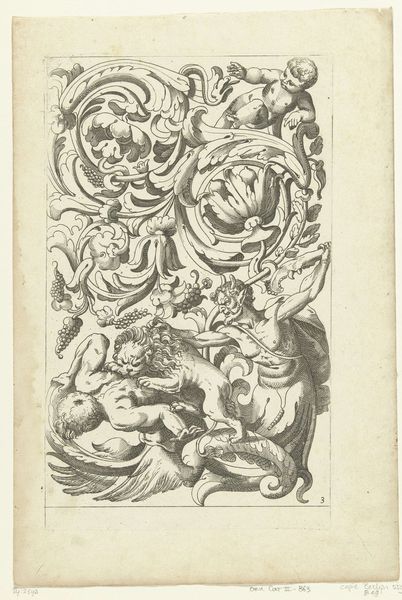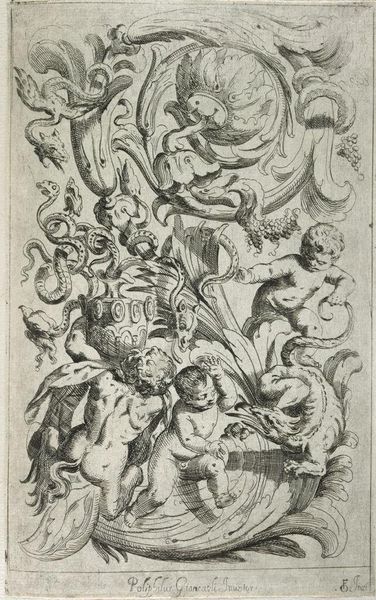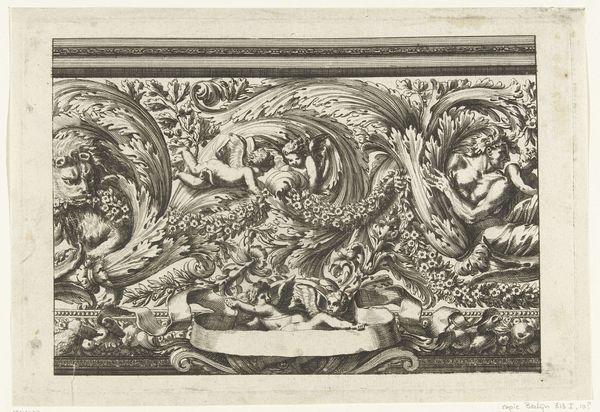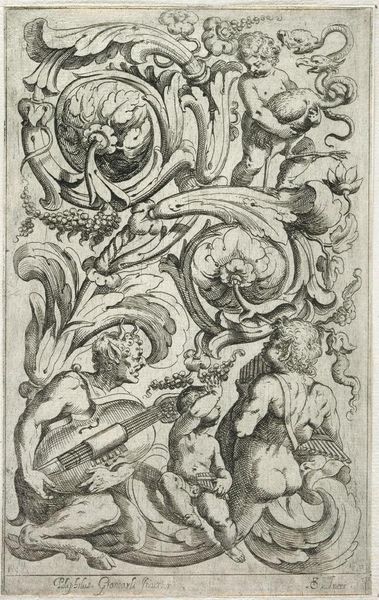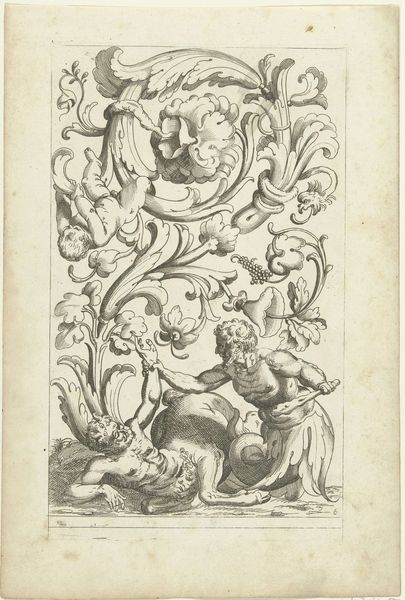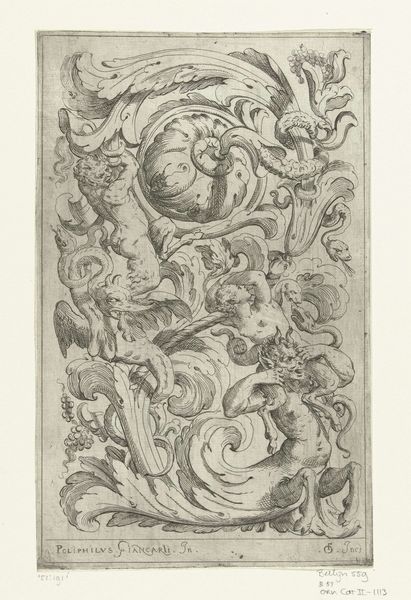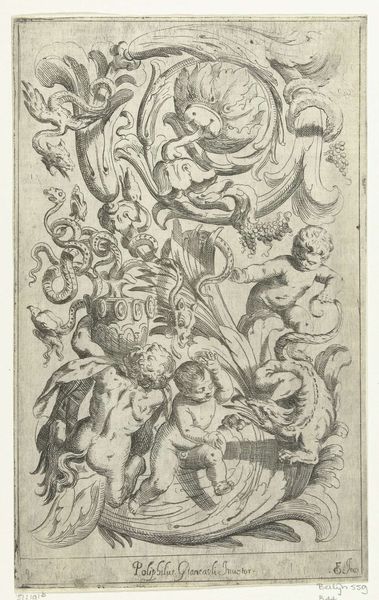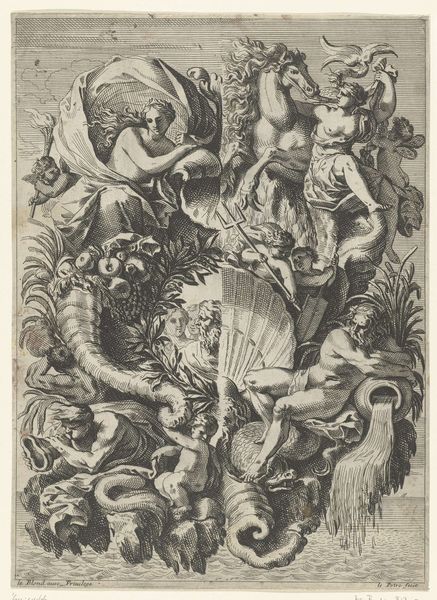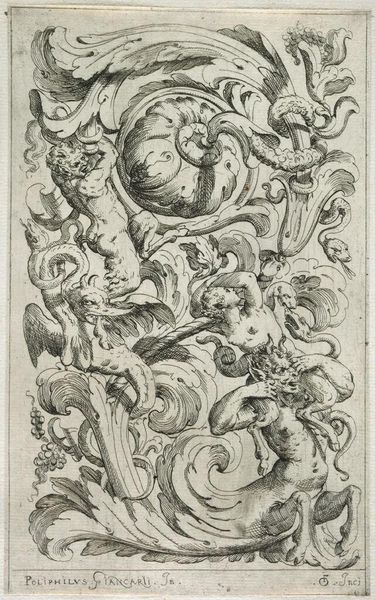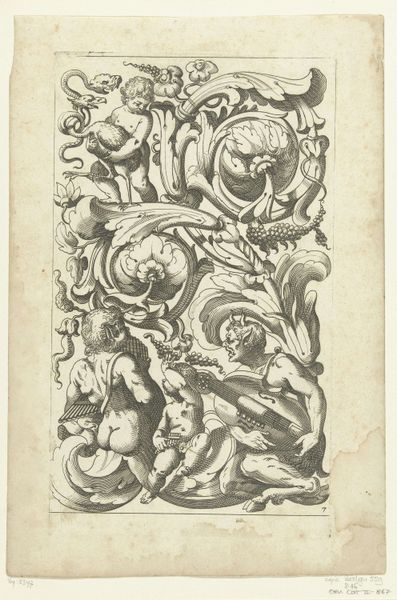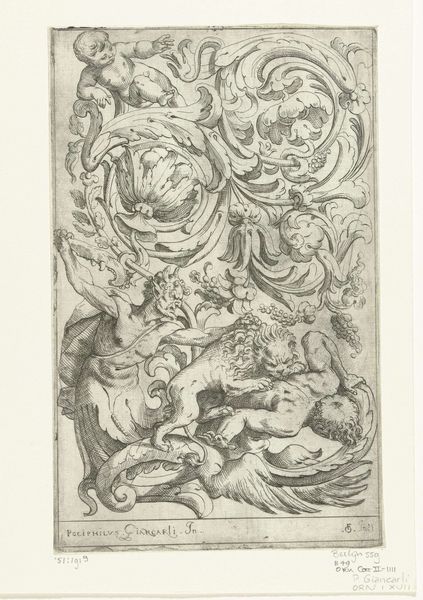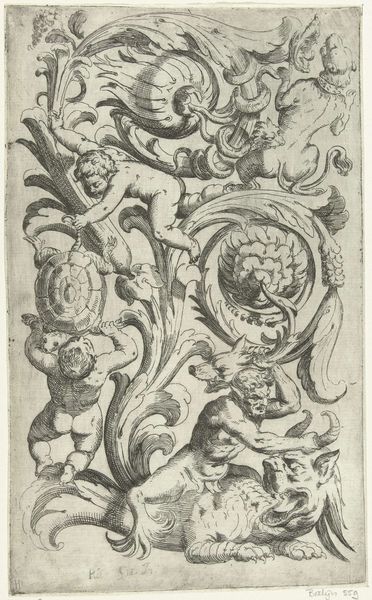
drawing, print, ink, engraving
#
drawing
#
ink drawing
#
allegory
#
baroque
# print
#
pen illustration
#
pen sketch
#
pencil sketch
#
figuration
#
ink
#
line
#
history-painting
#
engraving
Dimensions: height 234 mm, width 144 mm
Copyright: Rijks Museum: Open Domain
Curator: This drawing, housed here at the Rijksmuseum, is entitled "Triton en gevloerde centaur," or Triton and Defeated Centaur. Attributed to Odoardo Fialetti, it dates back to approximately 1625. It is done in ink, a masterful engraving of this mythical scene. Editor: My first impression is pure baroque drama! It's all swirling lines and muscular bodies. There's a real sense of chaos and dynamism. Even the foliage feels like it's caught in the tempest. It feels pretty unbalanced. Curator: It’s interesting you note that imbalance. Baroque art often utilized asymmetry to convey motion and energy. The subject, Triton dominating a centaur, definitely embodies power dynamics. The mythic Triton of the seas triumphs over the hybrid creature, reflecting societal power structures perhaps? It reflects the anxieties about uncontrolled passion and brute strength needing to be quelled by reason. Editor: Absolutely, it feels like a struggle for dominance. Look at the centaur's defeated posture! But I’m also drawn to those cherubs in the upper corner, they offer this levity amid the drama and a touch of innocence amidst the turmoil, like little spectators observing from on high. Also what is it with all of these ornate swirls? I want to find the calm core in the artwork but it is difficult with these flamboyant, overflowing borders. Curator: Ah, yes, the swirls! Characteristic of the Baroque style. These elements serve to amplify the scene, literally framing the central conflict within an extravagant setting. This was, in part, intended to impress the viewer and glorify power structures. And that style does dominate the artistic expression of the time. The tension in the engraving feels distinctly aligned with Fialetti’s Baroque era. It attempts to impress. Editor: I find it succeeds at it too! Knowing more about the Baroque era, especially that idea of "impressing," certainly reframes my view. Initially, I saw the swirling foliage as chaotic; now, it feels purposeful, a reflection of that time's need to be bombastic, opulent and show strength, I would like to see a zoomed-in print or something. The work almost asks you to consider what are its details to be better consumed and understood. Curator: Indeed, from a historical perspective, works like "Triton en gevloerde centaur" were about communicating authority and order through complex narratives and dramatic visuals. Thank you for your perspectives, that does make the piece and its history feel richer! Editor: It has been an interesting discussion and perspective and definitely more insight to this dynamic artwork that first met my eyes. Thanks for lending some historical and narrative depth, too!
Comments
No comments
Be the first to comment and join the conversation on the ultimate creative platform.
